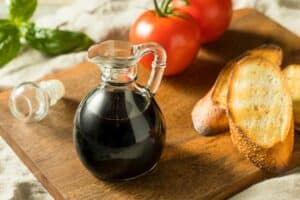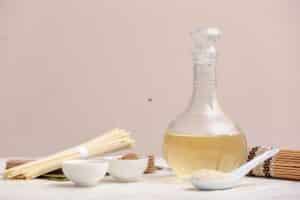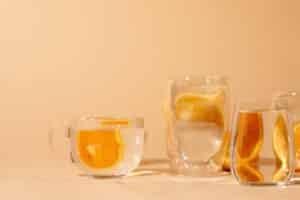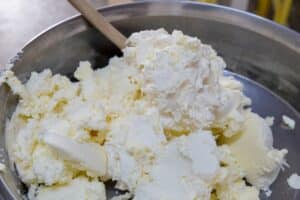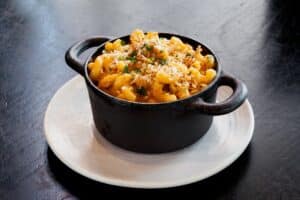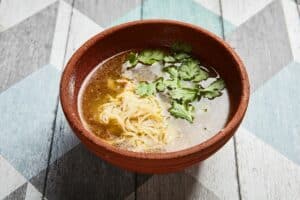While there are several different Vanilla sugar substitutes, the best is homemade vanilla sugar and a combination of vanilla extract and sugar. Vanilla syrup, brown sugar, and maple syrup all also can work well, though they all have their potential pitfalls to keep an eye out for.
Vanilla sugar is a lovely ingredient you can use to add a note of flavorful sweetness to baked goods and icings. It combines sugary delight with the complex, mild notes of vanilla, widely considered the world’s most popular flavor.
It’s often used in European recipes and is commonly sold in stores there. But it’s often much harder to find in other areas of the world, leading many to wonder what to use instead.
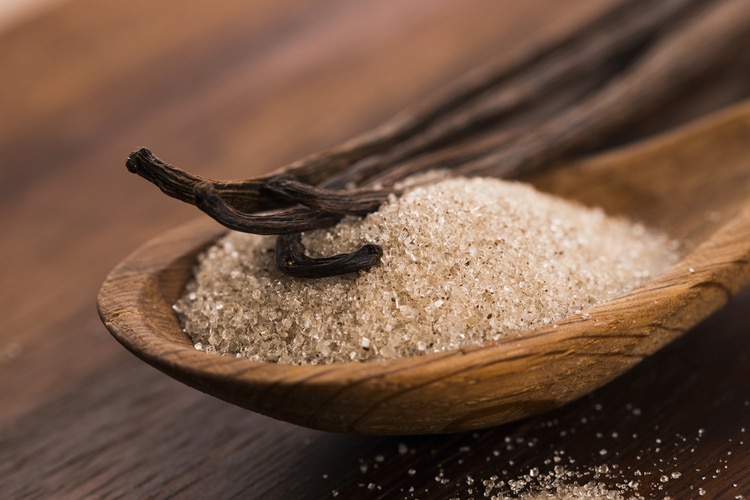
5 Recommended Vanilla Sugar Substitute
When a recipe calls for vanilla sugar, it’s trying to accomplish two things in one fell swoop: sweetening your dish and lending it a robust and distinctive vanilla flavor. Any substitute you use will be able to sweeten your dish – that’s the easy part.
The more challenging aspect of this is attaining the same vanilla flavor. The only real way to do that via substitute is to make your vanilla sugar, as the process involved in making the seasoning draws out unique dimensions of taste, but there are many different ways to simulate it.
Substitute 1 – Homemade Vanilla Sugar
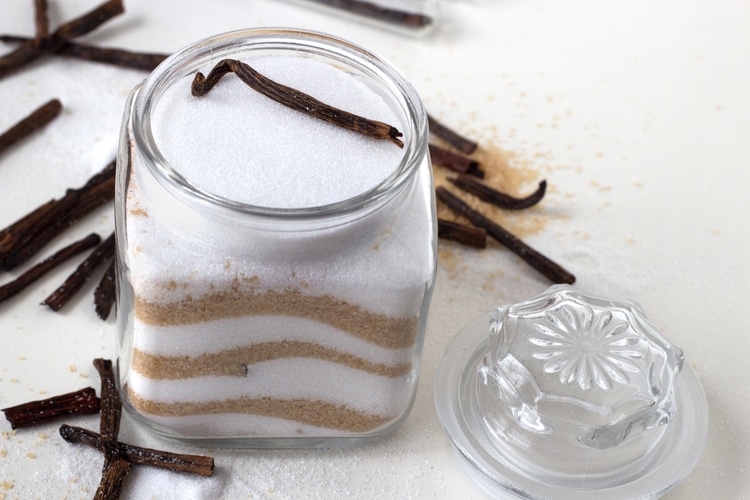
If you can’t find vanilla sugar at the store, the best possible substitute is to make your own using vanilla beans and ordinary sugar.
Although the process is more complex than just combining the two – that’s we recommend fully making your version if you can instead of just combining vanilla extract and sugar (though that can work decently as well).
The process works similarly to the process of making vanilla extract. In both cases, you’re taking advantage of the vanilla bean’s natural tendency to infuse its flavor into its surroundings.
Take one vanilla bean for every two cups of sugar you want to infuse. You can find vanilla beans at many grocery stores, though they’re typically much cheaper to purchase in bulk if you can find a supplier.
You can use any kind of sugar you like, so choose one whose flavor you want to experience in the dish in question. If your recipe calls for powdered vanilla sugar though, make sure to use powdered sugar.
You’ll start the actual process of making vanilla sugar by preparing the beans. First split the beans along their length without piercing through them, then remove the seeds if you want to.
The seeds can add more flavor but will add extra color and texture to the seasoning that you may not desire. On the flip side, if you want to maximize the seeds’ color and texture, you can remove them from the bean then mix them with the rest of the sugar.
Then place the bean in an airtight container with your sugar. One bean per container is typically best practice, though isn’t necessarily required.
Make sure the bean is fully immersed in the sugar, then put your container away into a cool, dark location so it can infuse.
Wait between two to five weeks, shaking the containers every few days, and then you’ll have homemade vanilla sugar!
Substitute 2 – Vanilla Extract and Sugar
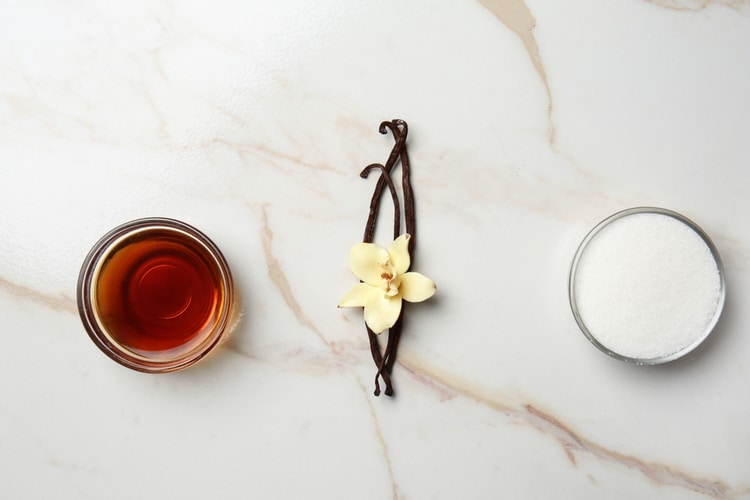
It’s quite possible that you do not have access to vanilla beans, or want to use the vanilla sugar sooner than the two weeks it will require to become infused. In that case, you’ll still be relatively good to go if you have access to vanilla extract and some kind of granulated sugar.
While this won’t give you the same taste that homemade or store-bought vanilla sugar would, it’s similar enough not to make a difference in most dishes. To maximize the depth of taste, consider using organic and/or high-quality extract and sugar.
To get the ratios right, use a teaspoon of vanilla extract and a quarter cup of your chosen sugar per quarter cup of vanilla sugar called for by the recipe.
This combination works especially well in recipes that call for vanilla sugar as the only vanilla flavoring in the dish, like this Hazelnut Cake one. Because you only have one vanilla flavor at play in the dish, the subtler distinctions between vanilla styles are less important to consider.
Substitute 3 – Vanilla Syrup
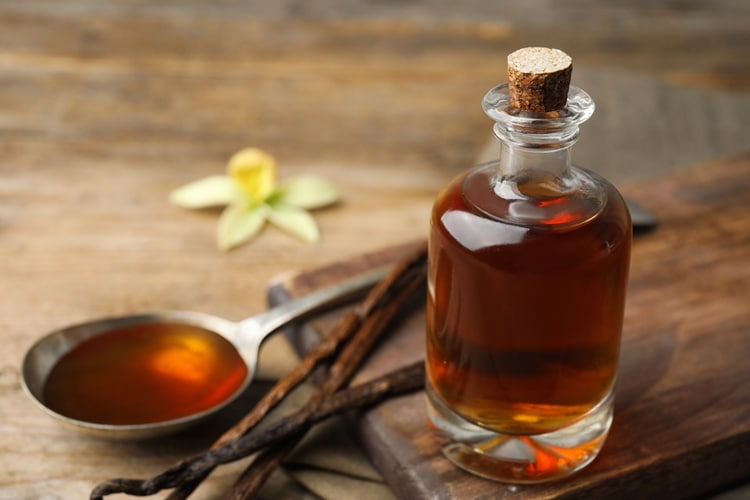
Not everyone has vanilla extract on hand, but many of those who enjoy a shot of vanilla in their morning coffee will often have vanilla syrup present and ready to use.
These vanilla syrups can serve as an excellent substitute for vanilla sugar, though there are some important caveats to consider before doing so.
The first one is texture: invariably, syrups are going to be thicker and stickier than granulated or powdered vanilla sugars. If you’re using this in a baked good, it’s likely wise to steer clear of vanilla syrup, as it could affect your dish in unpredicted ways.
Also, if you aren’t using homemade syrup, the qualities of different store-bought varieties can differ significantly.
Some are delicious, complex ingredients that will be a boon to any dish, while others taste much more like chemicals than the natural deliciousness of vanilla that we’re going for.
There are two excellent use-cases for vanilla syrup in this context. The first is in making icing – since icing is the sort of thing you can keep making changes to, the textural variations between vanilla syrups are going to be easier to account for.
This is doubly true if the texture of your icing doesn’t matter very much to you.
Substitute 4 – Brown Sugar
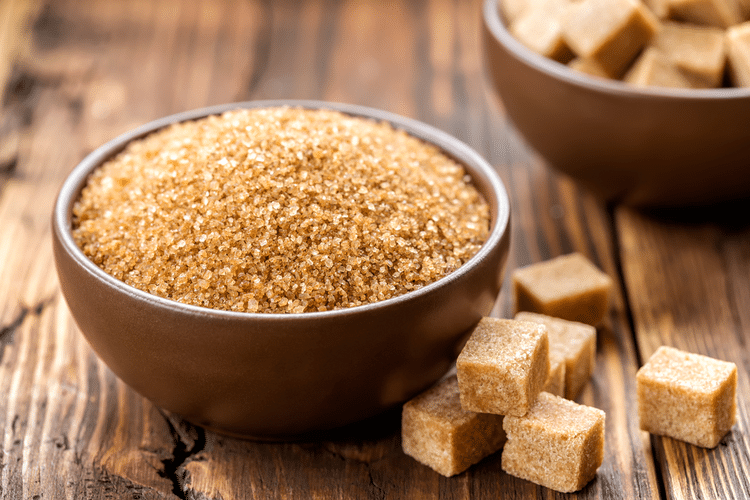
With this substitute, we’re starting to veer away from the vanilla-specific flavor and into flavors that accomplish the same goals as vanilla without mimicking it exactly. And that’s what brown sugar will do.
Vanilla seldom takes center stage in a given dish. Because of its unique yet mild flavor, it typically plays a supporting role, informing and undergirding the interplay of the other flavors without focusing attention on itself.
And so for non-vanilla substitutes, it’s best to look for ingredients that accomplish something similar without being too hard to attain. At that intersection, brown sugar is perhaps the best option.
The molasses-y flavors that brown sugar brings to the table are well known for their capacity to inflect the rest of a dish with complexity and deliciousness.
As a bonus, you could even combine brown sugar with vanilla extract if you have some on hand. The two blend together exceptionally well and will undoubtedly bring your dish to the next level.
Substitute 5 – Maple Syrup
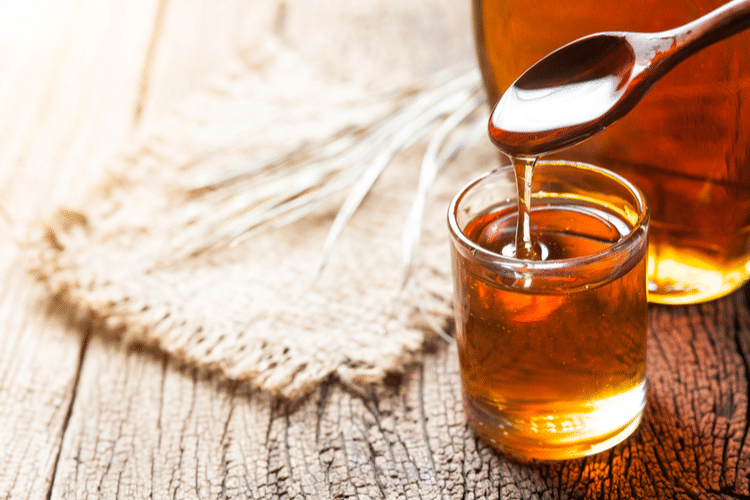
The final substitute we would recommend for vanilla sugar is maple syrup. In most cases, maple syrup will not be the best choice, but it may be what you have on hand.
It has more textural problems than most vanilla syrups due to its consistency, and of course, this would act as a different flavor than vanilla in the dish.
Maple syrup has a very distinctive flavor, and it typically shows up much more prominently than either vanilla or molasses in your dish. That said, it can be particularly useful in cases where a recipe calls for vanilla as a primary flavor like these vanilla bean scones.
Obviously, the maple syrup won’t mimic the flavor of vanilla itself, but it does perform a similar role to vanilla in these cases: being the center of attention while still informing all the other flavors that are happening.
In this way, maple syrup can act as an excellent replacement for vanilla sugar. It isn’t exactly a substitute, as it will change your dish, but because of the similarity in how vanilla and maple flavors engage with a dish, it can take your dish in a different direction of palate without sacrificing some of its overall quality.
Other Substitutes for Vanilla Sugar
If none of the alternatives we mentioned in this piece appeal to you, there are still other things you can do!
While you likely won’t find anything else that will work as well to mimic the vanilla portion of vanilla sugar’s flavor, there are other replacements in the vein of brown sugar and maple syrup.
For example, we didn’t mention any other infused sugars in this piece, and many of those can work as well. That’s especially true for sugars infused with other flavors that cooperate well in sweet dishes, like cinnamon and nutmeg sugars.
Like vanilla sugar, those other sugar infusions can work in two ways. You can make them through a long process that draws out complex flavors using the natural ingredients (like whole nutmeg or cinnamon sticks).
You can also do a simplistic combination that merely combines a ground variant with your existing sugar.

